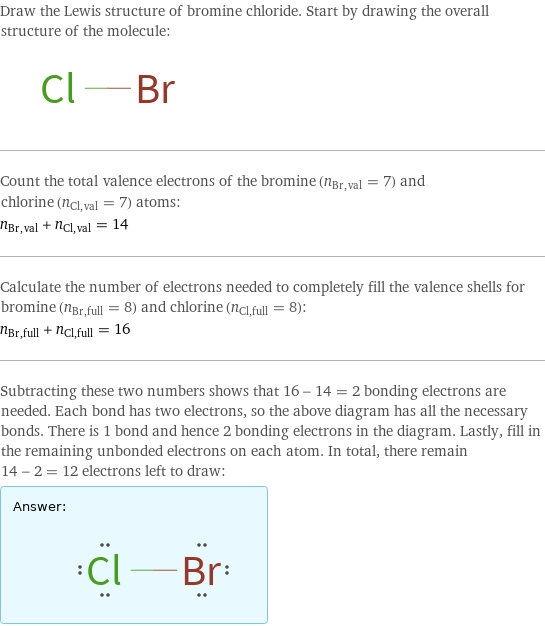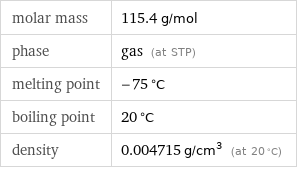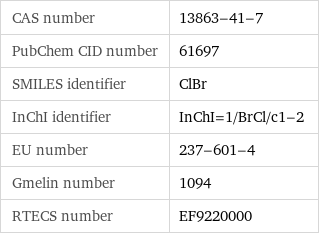Input interpretation

bromine chloride
Chemical names and formulas

formula | BrCl name | bromine chloride alternate names | bromine monochloride | bromochloride mass fractions | Br (bromine) 69.3% | Cl (chlorine) 30.7%
Lewis structure

Draw the Lewis structure of bromine chloride. Start by drawing the overall structure of the molecule: Count the total valence electrons of the bromine (n_Br, val = 7) and chlorine (n_Cl, val = 7) atoms: n_Br, val + n_Cl, val = 14 Calculate the number of electrons needed to completely fill the valence shells for bromine (n_Br, full = 8) and chlorine (n_Cl, full = 8): n_Br, full + n_Cl, full = 16 Subtracting these two numbers shows that 16 - 14 = 2 bonding electrons are needed. Each bond has two electrons, so the above diagram has all the necessary bonds. There is 1 bond and hence 2 bonding electrons in the diagram. Lastly, fill in the remaining unbonded electrons on each atom. In total, there remain 14 - 2 = 12 electrons left to draw: Answer: | |
Basic properties

molar mass | 115.4 g/mol phase | gas (at STP) melting point | -75 °C boiling point | 20 °C density | 0.004715 g/cm^3 (at 20 °C)
Units

Gas properties (at STP)

density | 0.004715 g/cm^3 (at 20 °C) molar volume | 24470 cm^3/mol
Units

Thermodynamic properties

specific heat capacity c_p | gas | 0.3034 J/(g K) molar heat capacity c_p | gas | 35 J/(mol K) specific free energy of formation Δ_fG° | gas | -0.008669 kJ/g molar free energy of formation Δ_fG° | gas | -1 kJ/mol specific heat of formation Δ_fH° | gas | 0.1266 kJ/g molar heat of formation Δ_fH° | gas | 14.6 kJ/mol (at STP)
Chemical identifiers

CAS number | 13863-41-7 PubChem CID number | 61697 SMILES identifier | ClBr InChI identifier | InChI=1/BrCl/c1-2 EU number | 237-601-4 Gmelin number | 1094 RTECS number | EF9220000